Leonard Brillson
Editor, INTERSECTIONS
Member, Government Affairs Committee
Welcome to our INTERSECTIONS Newsletter!
Since our last newsletter, the partial government shutdown that Capitol Hill must deal with is having a major impact on appropriations bills that directly affect federal support for our science and technology community.
The MRS Government Affairs Committee (GAC) aims to understand the associated changes in legislative policy environment and its impact on materials research. GAC Chair David Norton reviews some of the goals as well as challenges for materials research in the year ahead.
Our MRS Washington consultant Damon Dozier describes the impact that the shutdown is having now and going forward as well as the success of the National Quantum Initiative Act signed into law.
Our Grassroots Subcommittee Chair Boris Dyatkin describes the Congressional letter writing activities that took place over the past few months, especially at the MRS Fall Meeting, our welcoming new MRS Members, and the increasing importance of advocacy.
In that regard, Jennifer Nekuda Malik announces the creation of the Advocacy Engagement Subcommittee, which she now chairs, and her goals of engaging new MRS Members to become active advocates for their science as well as developing new tools to enable this advocacy.
In the Fellowship Corner, Congressional Fellowship Program Chair Ashley White describes the activities of MRS’s two newest co-sponsored Congressional Science and Engineering Fellows as well as those of our fellowship liaison.
Bill Hammetter, our Congressional Visits Day Chair, and Damon Dozier describe the Fall Congressional Visits Day (CVD) activities of the MRS delegation in Washington, DC.
Government Agency Subcommittee Chair Dio Placencia describes how your feedback helped improve our access to federal funding opportunities at the 2018 MRS Fall Meeting.
Finally, Marco Rolandi’s INTERSECTIONS article on Value-Added Materials Science in this issue features yet another success story, highlighting how federal investments in materials science pay off in ways that the public and especially our elected officials can relate.
MRS is working hard to make sure that the materials research community is being heard and that it has input in developing effective government policy for support of materials science. Here is the latest news.
Government Affairs Committee Chair
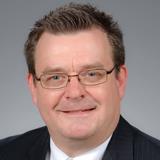 David Norton
David Norton
Chair, Government Affairs Committee
As we trek into 2019, the importance of effective engagement between government agencies and the research community is obvious and evident. On the technical side, the National Quantum Initiative launched across the U.S. government will require unprecedented control and understanding of materials in efforts to harness technological gains that are uniquely evident in electronic states at the smallest length scales. In transportation, built infrastructure, communications and computing, the demands for improved holistic performance of materials continue. In addition, the need for sustainability across the entire technology life cycle is becoming increasingly evident as society is forced to address the impacts of current and legacy technologies on the environment and quality of life both now and in the future.
In the areas of funding and policy, the role of the federal government is unequalled but can be thwarted by issues well outside the framework of the research itself. As 2019 was winding up, the U.S. grappled with a partial government shutdown that negatively impacts agencies such NSF, NIST, and NASA that fund and support materials research. The discord leading to the shutdown had nothing to do with the research community.
The academic and industry research communities must remain diligent in communicating the importance of stability and effective leadership within government in driving research efforts forward to the benefit of all. Together, we can secure a better future.
What's Happening in Washington
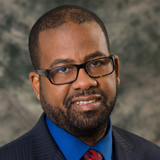 Damon Dozier
Damon Dozier
MRS Director of Government Affairs
As 2018 wound down to a close, Congress had passed some legislation to fund the government in 2019, but still had not completed all its work to avoid at least a partial government shutdown, with the passage of a few select appropriations bills increasingly uncertain. A "minibus" of three bills (Energy & Water, Legislative Branch, and Military Construction & VA) was signed by the President in early September, and an additional minibus of two bills (Defense and Labor-HHS-Education) passed later that month. An additional bill that funded the remaining parts of the federal government through December passed in September as well, and provided short-term funding for appropriations covered by Agriculture; Commerce, Justice, Science; Financial Services & General Government; Homeland Security; Interior, Environment; State, Foreign Operations; and Transportation, HUD. On December 21, the CR covering funding for these operations expired, resulting in a partial government shutdown.
Congress tried to address the shutdown before it occurred with the Senate passing a seven-week CR on December 19 that would run through February 8, and the House passed an amended version of that legislation which included more than $5 billion for border wall construction (in response to the Administration’s request that any legislation funding the government must include such a provision), on Thursday, December 20, by a vote of 217-185. The President has said he would not sign the measure without the border wall funds, but the measure is not expected to pass the Senate as amended by the House. Negotiations are continuing, and the shutdown is widely expected to last into early 2019.
Federal agencies that make numerous grants to higher education and for other purposes for materials science-related research - including the National Science Foundation, and the National Aeronautics and Space Administration - are funded by appropriations bills that have not been signed into law. The NSF budget—more than $7.5 billion—supports thousands of research grants to faculty members nationwide in the physical sciences, as well as science education programs. Generally, faculty members, institutions receiving grants and others do not face a severe impact in the first few days of the shutdown as funds already distributed may continue to be used. However, as long as the shutdown continues, new funds from these agencies will not go out. Most grants, in particular large grants, are not covered by a single payment from the agency. In contracts with each institution, a timeline is set and funds are distributed according to that plan. The longer the shutdown goes on, the more likely it is that research and education programs on campuses will not receive funds on the schedules they have planned. There is also the impact of the shutdown on future grants. Agencies have extensive peer-review processes involving agency officials and outside teams of experts who gather to review applications. Agency officials’ field questions all the time about preparing grant applications; none of this will take place while these government agencies shut down.
On December 23, the President signed HR 6227, the National Quantum Initiative Act, into law. The legislation was co-sponsored by Chairman Lamar Smith (R-Texas) and Ranking Member Eddie Bernice Johnson (D-Texas). S. 3143, the Senate companion bill, was introduced by Senate Commerce, Science, and Transportation Committee Chairman John Thune (R-S.D.) and Ranking Member Bill Nelson (D-Fla.). Senate Energy and Natural Resources Committee Chairwoman Lisa Murkowski (R-Alaska) and Ranking Member Maria Cantwell (D-Wash.) authored new Department of Energy provisions within the Senate bill. MRS was a proactive supporter of the legislation, having met with science committee staff on both sides of the Hill on multiple occasions to advocate for its passage.
The National Quantum Initiative Act:
- Forms a 10-year federal program to advance quantum science development and technology applications in the United States
- Establishes a National Quantum Coordination Office within the White House Office of Science and Technology Policy to oversee interagency coordination, provide strategic planning support, serve as a central point of contact for stakeholders, conduct outreach, and promote commercialization of federal research by the private sector
- Supports basic QIS research and standards development at the National Institute for Standards and Technology, supports Energy Department basic research and establishes Energy Department national research centers, and supports National Science Foundation basic research and academic multidisciplinary quantum research and education centers
- Encourages U.S. high-tech companies, which are investing heavily in quantum research, and a wave of quantum technology start-ups, to contribute their knowledge and resources to a national effort
- Addresses fundamental research gaps, creates a stronger workforce pipeline, and takes the lead in developing quantum standards and measures for global use and thereby give U.S. companies and workers an enduring competitive advantage
Grassroots Subcommittee Chair News
 Boris Dyatkin
Boris Dyatkin
Chair, Grassroots Subcommittee
The Grassroots Subcommittee continues its mission as an advocacy vehicle on behalf of thousands of MRS Members of the MRS community. The SC recently gained several new members who rejuvenate and reinforce our efforts with their passion and diverse expertise. Our efforts during the 2018 MRS Fall Meeting yielded another successful Materials Voice campaign. During the Boston Meeting, attendees had the opportunity to contact their respective public service officials and voice their support for several critical issues. First, the Grassroots Subcommittee brought forth a letter that highlighted the importance of sustained and uninterrupted funding for the National Institute of Standards and Technology (which receives financing from Department of Commerce appropriations) and the National Science Foundation (which is an independent agency with its own appropriations). Second, MRS Members sent letters to U.S. senators in support of a speedy confirmation of a nominee for the Office of Science and Technology Policy. Finally, the Materials Voice campaign expressed support for the National Quantum Initiative authorization legislation that is making its way through Congress.
Recent national news further highlight the need for advocacy, and the voice of the thousands of MRS Members—scientists and engineers, students and teachers, business leaders and academics—must become stronger than ever before. At the end of 2018, squarely in the middle of the holiday season, our national collective festive spirit was darkened by the partial government shutdown. Our letter campaign has repeatedly stressed the dangers of interrupted funding to the main institutions that power scientific enterprise in the United States, including aforementioned NIST and NSF—Yet, these agencies now stand idle and cannot accept grant proposals, conduct groundbreaking experiments, and aid the scientific enterprise on which our materials research efforts depend. If we do not yet feel immediate pain from this shutdown, its irreparable effects will reach us eventually. While other issues dominate the conversation in Washington, and in the news, only a few voices – ours included – are sounding the alarm on the lasting damage that this appropriations lapse inflicts on our nation’s scientists, students, and future technological breakthroughs. It is up to every one of us—every Member of the materials research community—to advocate on behalf of a pragmatic science policy, extol its virtues, and warn the policymakers and public of consequences of adverse action on our long-term national security, vitality, and prosperity. As scientists, it is our duty to be informed about policy decisions and ensure that science does not get crowded out in the national discourse.
Advocacy Engagement—Our Newest Initiative
 Jennifer Nekuda Malik
Jennifer Nekuda Malik
Chair, Advocacy Engagement Subcommittee
Advocacy is the means by which science gains a voice within the policy world. As a former MRS Congressional Fellow, a current science and policy writer, and a longtime Member of the MRS Government Affairs Committee, I have learned not only the importance and value of advocacy, but also many ways to make advocacy more effective. I am excited to employ this knowledge for the materials community in my new role as the Chair of the Advocacy Engagement Subcommittee.
I am still working to find my feet in this new role, in part because the subcommittee itself is relatively new and many of its activities have yet to be fully defined. The goal of the subcommittee is to engage MRS Members to become effective advocates across the broad scope of materials-related policy issues. To date, the subcommittee has focused its efforts on educating the materials community about different means of advocacy through a series of articles that have appeared in the Bulletin. In addition, the MRS-sponsored Congressional Fellowships (in partnership with the TMS and OSA) are managed by this subcommittee and headed by Ashley White. The selection process for the 2019-2020 Fellows is currently underway.
During my tenure as the Advocacy Engagement Subcommittee Chair, I plan to focus on engaging more Members to become active advocates for their science, and developing tools that will enable more targeted and effective advocacy for issues that impact the materials community. If you are reading this and interested in becoming involved, please contact Donna Gillespie at [email protected]—this subcommittee is actively looking for new Members that would like to become engaged in the science policy world—please join us!
MRS Congressional Science & Engineering Fellowship Corner
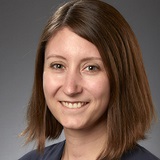 Ashley White
Ashley White
Chair, Congressional Fellowship Program
The two 2018–2019 MRS co-sponsored Congressional Science & Engineering Fellows are now in the fifth month of their fellowships on Capitol Hill and have settled in after a federal government orientation provided by the American Association for the Advancement of Science (AAAS) and Congressional office placement. They report they are learning a lot about the legislative process and are already making significant contributions to their offices.
Dylan Rittman (MRS/OSA Fellow) is working in the office of Senator Kirsten Gillibrand (D-NY), covering defense and foreign policy issues. He is enjoying seeing how his science background helps contribute to solving real-world policy challenges. Looking forward to the rest of his fellowship, Dylan is excited to learn the legislative process and work on issues at the intersection of science, technology, and national security.
Michele Bustamante (MRS/TMS Fellow) has placed in the office of Senator Edward J. Markey (D-MA), covering issues of energy, environment, transportation and infrastructure. She is particularly enjoying her role helping to organize the weekly Senate Climate Change Task Force that Senator Markey co-chairs, bringing together senators and their staff with outside experts in climate science, negotiations, finance, policy, and technology to learn and strategize together. Michele is excited to expand upon her current efforts interpreting the findings of the latest national and international climate science and designing legislative proposals capable of mitigating the worst impacts to people and our planet.
I led an informational session for prospective fellowship applicants at the 2018 MRS Fall Meeting in Boston. Michele was able to attend the Fall Meeting and info session and provided a first-hand account of the fellowship. Former Fellow Jeremy Ward (MRS/TMS 2015–2016) also participated in the session, sharing his post-fellowship perspective.
In Washington, DC, fellowship liaison Drew Steigerwald (MRS/TMS 2012–2013) has been facilitating networking opportunities for the current fellows to help maintain a strong MRS fellowship alumni community and assist fellows in their professional development.
The selection process for next year’s fellowship is already getting underway. The January 4 application deadline has just passed, so we are starting to review applications and looking forward to getting to know the next crop of applicants.
Applications for the 2019–2020 MRS Congressional Fellowship are due January 4, 2019. If you are interested in learning more about the program and will be at the MRS Fall Meeting in Boston, I encourage you to come to our information session on Monday, November 26, from 5:15–6:15 pm.
Fall Congressional Visits Day
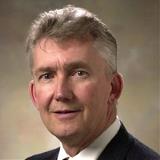 William (Bill) Hammetter
William (Bill) Hammetter
Chair, Congressional Visits Day Subcommittee
On October 9-10, 2018, the MRS held its Fall Congressional Visits Day (CVD) activities in Washington, DC. Over the course of the two days, a delegation of people (which included MRS Vice President Mike Fitzsimmons, Secretary Eric Stach, Government Affairs Committee Chair David Norton, Executive Director Todd Osman and Director of Government Affairs Damon Dozier) met with selected Congressional Committees and representatives from the Department of Energy and Department of Defense.
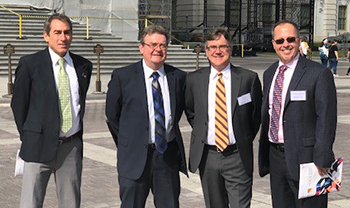 |
|
Left to right: Mike Fitzsimmons (2019 MRS President) David Norton (Chair, GAC), Eric Stach (MRS Secretary), Todd Osman (MRS Executive Director)
|
The first day we spent on Capitol Hill, where the MRS delegation met with staff from offices that both authorize and fund agencies such as the DOD, NSF, DOE and NIST. Discussions included the status of FY2019 appropriations bills, including the still unresolved funding issues around NSF and NIST, levels of funding being considered for FY2020, and the status of the slate of Administration nominees for a number of posts that require Senate confirmation, including the head of the White House Office and Science and Technology Policy and the head of the DOE's Office of Basic Sciences. In both cases, MRS was able to effectively communicate the point that Congressional inaction can have deleterious effects on scientific research.
Other topics that were discussed included the emerging areas of research around artificial intelligence, quantum information sciences and synthetic biology. These areas of research were of particular interest to both the House Committee on Science, Space and Technology and the Senate Committee on Commerce, Science and Transportation where the delegation had a chance to talk to both the majority and minority staff about not only the importance of sustained federal research in these areas, but to also communicate the many activities that MRS as a society engages in to support the community involved in these topics, including symposia at the MRS Fall Meeting in Boston.
The second day was spent with the DOD and the DOE, where the delegation met with Dr. Bindu Nair, the Deputy Director of the DOD Office of Basic Research, and a group of individuals for the DOE, including Chris Fall, the acting director of ARPA-E (and the Administration nominee to head the DOE Office of Science), and Dr. Linda Horton, Director of the Materials Science and Engineering Division.
While talking with Dr. Nair, the delegation discussed ways in which her office and MRS could work more closely to make MRS Members more aware of funding opportunities provided by the DOD, including the Vannevar Bush Faculty Fellowship and other programs. Dr. Nair is no stranger to the MRS community; she is a Member and has made presentations at the Government Agency funding sessions at MRS Meetings.
At the DOE, the delegation spoke with Dr. Fall about not only the restoration of funding for ARPA-E, but also his plans (once confirmed) for the Office of Science. The group also spoke to Linda Horton and her team about a greater working relationship between the team working with the Energy Frontier Research Centers and the MRS community.
Overall, the two days of meetings were a great success, and I thank the MRS volunteer leadership team for all their great work in representing the Society.
2018 MRS Fall Meeting—Your Government Agency Fall Meeting Feedback Pays Off
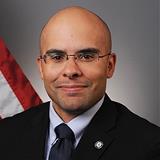
Diogenes (Dio) Placencia
Chair, Government Agency Subcommittee
Dear Members:
Our committee hopes that you, your families, and communities had a wonderful holiday! Such times always serve as a reminder of why we do, what we do, every day, as we march into our offices, labs, and places beyond. With the start of 2019, there is no shortage of challenges laying ahead for research funding not just within the U.S., but also worldwide. With signs of an unstable global economy upon us, governments around the world look towards shoring up priorities of their constituencies, which most of the time, unfortunately, does not include funding for scientific research. It is therefore imperative for operating committees within professional societies (e.g., MRS GAC) to continue to provide the pressure needed to stay within the radar of decision makers, keep Members aware of the activities that can impact their research, and maintain a link between those Members and funding agencies.
It is for this reason that this subcommittee continues to drive towards offering Members the link between these funding agencies and themselves. With each passing meeting, we continue to tweak, poke, and observe (like good scientists!) our Research Funding Opportunities sessions and depend on your feedback in order to increase the net result: connecting Members to funding streams. Two examples of how your feedback yielded concrete results during the 2018 MRS Fall Meeting came in the form of (1) adding a biomaterials-focused funding opportunity (Dr. David Rampulla – NIH/NIBIB) and (2) posting presentations as quickly as made available to the 2018 MRS Fall Meeting website. Looking at the evolution of the sessions over the past few meetings, we can see even greater, more positive changes that resulted from your feedback. Hence, it is critical for us to hear from you; either via our sessions or via reaching out to us directly… your voice matters… and we are listening!
Therefore, always know that your participation within the MRS (e.g., through meetings, paying your annual dues, feedback for us, submitting publications, etc.) has a direct impact upon Materials Research, all the way from the new discoveries being made at the lab, down to the level of operating committees trying to ensure that your interests are represented within the halls of power around the globe… because at the end of the day, we work hard, debate, research topics of interests, and leave our offices, labs, and places beyond to the things that matter the most… our families, friends, and communities. This is why you do what you, and this is why we do what we do... Until next time.
A Value-Added Materials Research Story—Chitin- From Microneedles for Tuberculosis Testing to Compostable Packaging
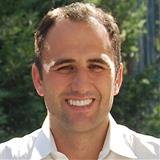
Dr. Marco Rolandi
Associate Professor, University of California, Santa Cruz
Co-Founder, Cruz Foam
In 2008, as a young Assistant Professor in MSE at the University of Washington, I was exploring the conductivity of H+ in hydrated biopolymers. Specifically, I was dreaming of creating a field effect transistor that would control the current of H+ rather than electron and holes. At the time, I knew very little about biopolymers, and our attempts with collagen and keratin were largely unsuccessful until Chao Zhong, a freshly minted PhD from Cornell, joined our team and introduced us to the magical world of chitin!
Chitin is the second most abundant polysaccharide after cellulose, and it is found in the exoskeleton of insects, in crab and lobster shells, fungi walls, and many other critters, including Banana Slug. Zhong was an expert in modifying chitin, and he finally got our H+ transistor to work (https://www.nature.com/articles/ncomms1489). In order to fabricate devices, we had to learn how to create microstructures with chitin (https://onlinelibrary.wiley.com/doi/full/10.1002/adma.201102639), which opened up many opportunities in tissue engineering (https://pubs.rsc.org/en/content/articlelanding/2013/tb/c3tb20782j#!divAbstract) and microneedles for drug delivery and diagnostics.
The microneedles caught the attention of entrepreneur in residence, Ron Berenson, and we started exploring commercial application of chitin microneedles. Ron wanted to find an application where our technology could solve an unmet need and do so in a price competitive manner. We settled on using the chitin microneedles, now called microstaples, to close surgical wounds as strong as sutures and fast and easy like a band-aid. A few years later, KitoTech Medical (I am the co-founder with Ron) sells microMend (http://www.kitotechmedical.com). MicroMend is now used to close surgical wounds of many kinds with excellent results. Turns out, the microstaples in microMend are no longer made of chitin, but surgical stainless steel. The well-known material already used in surgical applications ended up having many advantages over chitin for this product.
But what about chitin? Chitin research continued in my laboratories, and we worked with Derrick Carter of the Infectious Disease Research Institute on chitin microneedles for Tubercolosis Testing (https://onlinelibrary.wiley.com/doi/full/10.1002/adhm.201300185). We also collaborated with Fiorenzo Omenetto at Tufts on chitin silk composites (https://onlinelibrary.wiley.com/doi/full/10.1002/adma.201301429) and received funding from the Office of Naval Research.
After seven successful and wonderful years at the University of Washington as an Assistant and then Associate Professor, in 2015, it was time for a move and I decided to relocate the group to the University of California, Santa Cruz—go slugs! John Feltz, one of the MS students working in my laboratories on testing the mechanical properties of chitin microneedles, decided to follow me to pursue a PhD. Armed with the enthusiasm of new beginnings and supported by a generous startup, we decided to do something completely different.
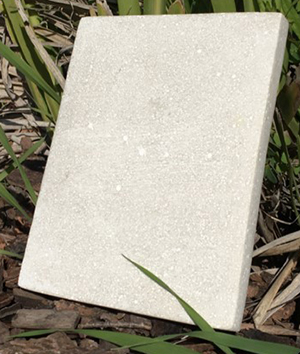 While the group was successful in chitin microfabrication, it was difficult to make such small structures out of chitin, so we decided to make something big. At this stage, too much California sun after many years in the Pacific Northwest played a big role in our decision making process: we decided to make surfboards! Surfboards are shaped from a Styrofoam or polyurethane foam blank that is then wrapped in fiberglass. John and I, both passionate about the ocean and surfing, were worried that our boards would become culprits to having more plastic than fish in the sea by 2050, or grow the pacific garbage patch to well over twice the size of Texas—its current size. John went to the lab and decided to make foam out of chitin that would eventually degrade if it ended up in the ocean.
While the group was successful in chitin microfabrication, it was difficult to make such small structures out of chitin, so we decided to make something big. At this stage, too much California sun after many years in the Pacific Northwest played a big role in our decision making process: we decided to make surfboards! Surfboards are shaped from a Styrofoam or polyurethane foam blank that is then wrapped in fiberglass. John and I, both passionate about the ocean and surfing, were worried that our boards would become culprits to having more plastic than fish in the sea by 2050, or grow the pacific garbage patch to well over twice the size of Texas—its current size. John went to the lab and decided to make foam out of chitin that would eventually degrade if it ended up in the ocean.
Three years later and with funding from friends and family, CruzFoam (https://www.cruzfoam.com) makes sustainable and compostable packaging. With the many bans affecting Styrofoam packaging, there is a large market opportunity for CruzFoam. CruzFoam learned this with customer discovery that Xiaolin Zhang and John did as part of the NSF i-Corps. Xiaolin joined CruzFoam after she received a PhD in my laboratories working on chitin while funded by the Office of Naval Research, and John decided to take a leave and to start CruzFoam after winning the UCSC Grad Slam and placing second at the UC-Wide competition. I am the third co-founder of CruzFoam. CruzFoam was part of the Plug and Play sustainable materials and packaging cohort and is getting close to the demo day with the Alchemist Accelerator. We are working on pilots for three customers, and we are excited to be a part of making packaging more sustainable and friendlier to our oceans.
Feedback
We welcome your feedback and invite you to submit topics for consideration in future issues of this newsletter. If you have or know of stories that illustrate how an investment in materials research paid off in real dollar terms, please send your suggestions to INTERSECTIONS Editor, Len Brillson, at [email protected]. Please send your comments to [email protected].
Sign up for MRS newsletters and alerts by visiting My MRS. There you can login or create an account, and select INTERSECTIONS under Public Policy to receive this quarterly newsletter via email.
Not a current MRS member? It’s never too late to join or renew.